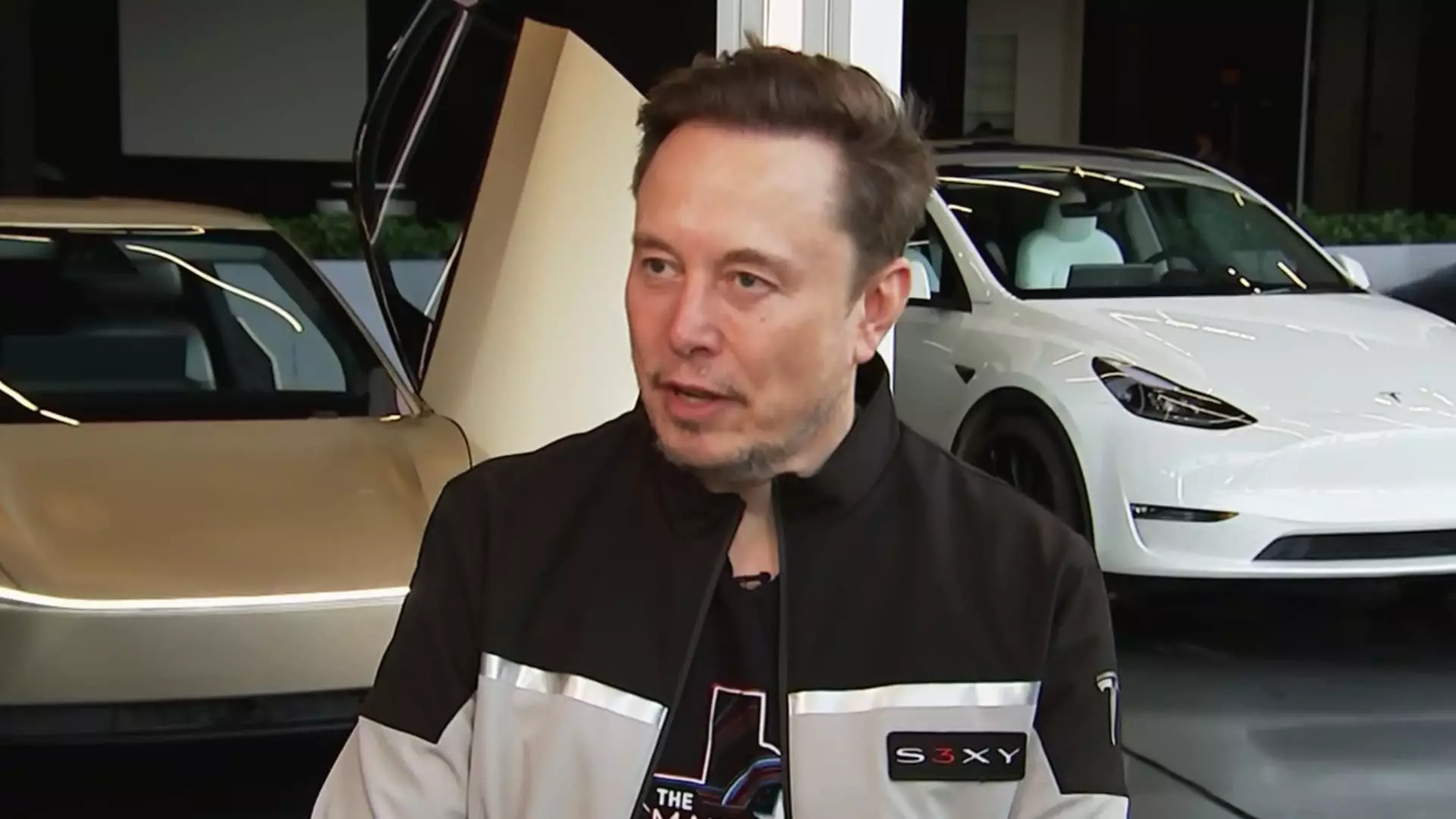Elon Musk, the enigmatic CEO of Tesla, has once again taken the spotlight with ambitious plans to roll out robotaxis in Austin, Texas, by the end of June. During a recent interview with CNBC’s David Faber, Musk laid out the framework for a project that has been generating excitement—and skepticism—since its inception. With promises dating back to 2016 regarding a fully autonomous vehicle that would operate without human intervention, Musk’s expectation is that this endeavor will catapult Tesla into a new era of transportation.
What sets this initiative apart from previous announcements is the clarity of Musk’s timeline and the strategic approach he outlined. Starting with a fleet of ten Model Y vehicles equipped with the next iteration of Full Self-Driving (FSD) technology dubbed FSD Unsupervised, Musk’s plan to scale up to a significant number of vehicles hinges on an incident-free launch. This cautious yet optimistic method seems to indicate a shift in Tesla’s approach—transitioning from mere promises to measurable steps.
Comparing Giants: Tesla vs. Waymo
While Alphabet’s Waymo has already established itself in the driverless ride-hailing sphere, conducting a staggering 250,000 paid trips weekly across various U.S. markets, Musk’s confidence in Tesla’s technology is unabashed. He emphasized that Tesla’s roadmap diverges significantly from that of competitors, arguing that relying heavily on camera-based systems and AI rather than expensive lidar and radar tools will enable quicker scaling and broader adoption.
Musk’s assurance that there will be no human safety drivers in the vehicles, supplemented by Tesla employees remotely monitoring fleet activity, reflects a bold strategy that can determine the success or failure of this groundbreaking service. The juxtaposition of Waymo’s more cautious framework, which uses a comprehensive array of sensors, against Tesla’s less sensor-intensive but potentially more aggressive production model could lead to a captivating showdown in the electric vehicle landscape.
Geofencing and Operational Strategies
An intriguing component of Tesla’s robotaxi launch is the geofencing strategy Musk intends to implement in Austin. By initially limiting the operational boundaries of the Model Y vehicles, Tesla aims to create a controlled environment where the robotaxis can prove their efficiency and reliability. This move appears wise, allowing for close monitoring of the vehicles’ behaviors as they navigate urban settings while simultaneously addressing public safety concerns.
Musk’s philosophy suggests that the company intends to progressively lift these restrictions as confidence in the technology grows. This operational stratagem could not only bolster consumer trust but also lay a foundation for a gradual transition to an autonomous future that many are still hesitant to embrace.
The Underlying Challenges and Broader Implications
Despite these innovations, Musk’s narrative doesn’t come without challenges. Tesla is currently facing a dip in electric vehicle sales, attributed to necessary factory retooling for the refreshed Model Y. The 20% drop in automotive revenue underscores the inherent risks that accompany such significant technological advancements. Musk’s assertion that a “major rebound in demand” is on the horizon, without providing specific figures, raises questions about whether optimism can effectively substitute for solid data in the competitive automotive market.
Furthermore, Musk’s dual role as a business mogul and a political figure—especially in light of his advisory position to former President Trump—introduces complex dynamics that could affect Tesla’s public image and, consequently, sales. The intertwining of corporate leadership and political affiliation could alienate certain consumer segments, an aspect Musk acknowledged by questioning how much customers consider a CEO’s political views when making purchasing decisions.
Future Directions: Musk’s Commitment
As Musk commits to steering Tesla for the next five years, his ability to navigate this multifaceted landscape will be put to the test. Speculation surrounding his direct involvement in politics, his ventures in space through SpaceX, and his plans for AI with xAI may raise eyebrows, yet they also reflect his relentless drive for innovative disruption across industries. Each of these endeavors ties back to Musk’s overarching philosophy: to radically challenge and shape the norms of transportation and technology.
In a world increasingly fixated on sustainability and innovation, Musk’s robotaxi venture could potentially redefine urban mobility. However, whether Tesla can maintain accountability and deliver on its lofty promises remains to be seen. The next few months in Austin could very well determine the trajectory of automated transport and Tesla’s position within a fast-evolving market.

